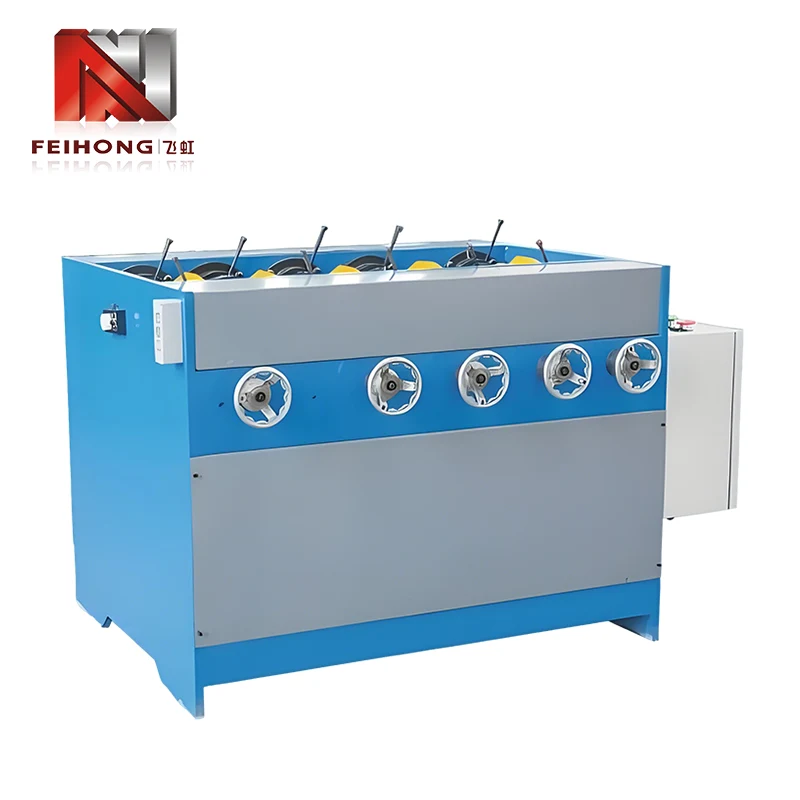How to Choose a Pipe Straightening Machine Model
2025-06-23
A pipe straightening machine is an essential piece of equipment in industries that deal with pipe fabrication, including construction, automotive, manufacturing, and various other sectors. The process of straightening pipes is crucial to ensure that they meet the desired specifications for mechanical strength, durability, and ease of installation. With various models available, choosing the right pipe straightening machine is vital to ensure efficiency and cost-effectiveness in production. Below are key factors to consider when selecting a pipe straightening machine model.
1. Type of Pipe to Be Straightened
The first consideration in choosing a pipe straightening machine is the type of pipe that needs to be straightened. Pipes can vary in material (e.g., steel, aluminum, plastic, or copper) and diameter. Some machines are specifically designed for certain materials or pipe sizes, while others are versatile and can handle a range of pipe types.
Material: Ensure that the machine you choose is compatible with the material of the pipe. For instance, pipes made from harder materials like steel require more robust machines with stronger straightening mechanisms, while softer metals like aluminum might need machines that apply less force.
Diameter: Check the capacity of the machine in terms of pipe diameter. Some models are designed for small-diameter pipes, while others are built for larger pipes. It's important to match the machine's capacity with the size of the pipes you typically handle.
2. Machine Capacity and Straightening Force
The straightening force required to correct the curvature or deformation of a pipe depends on the pipe's diameter, wall thickness, and material properties.
Force Range: Look for a machine that can handle the required straightening force for your specific pipes. Machines with adjustable force settings are ideal as they offer flexibility for different pipe sizes and materials.
Capacity: Make sure that the machine's capacity (in terms of pipe diameter and length) aligns with your production needs. Consider both the minimum and maximum diameter ranges to ensure the machine can handle all types of pipes in your operations.

3. Automation and Control Features
Modern pipe straightening machines come with advanced control systems that can improve efficiency, precision, and repeatability. When selecting a model, consider the following automation and control features:
Digital Controls: Machines with digital control systems can offer more precise straightening adjustments. These systems typically include LCD displays, push-button controls, and programmable settings for consistent results.
Automation: If your operations require high-volume pipe straightening, consider a fully automated model. These machines often feature automatic loading and unloading systems, which can reduce labor costs and improve throughput.
Feedback Mechanisms: Some models have real-time feedback mechanisms that allow operators to monitor the straightening process and make adjustments as necessary. This can help prevent errors and minimize downtime.
4. Speed and Efficiency
The straightening process can be time-consuming if the machine does not operate efficiently. The speed of the machine is critical in high-output industries. Choose a model with a suitable straightening speed that meets your production targets. Faster machines can handle more pipes per hour, while slower models may offer more precise straightening for applications that demand high accuracy.
5. Ease of Maintenance
Regular maintenance is necessary to keep a pipe straightening machine functioning optimally. When evaluating different models, consider the following:
Serviceability: Machines that are easier to service and repair can reduce downtime in case of breakdowns. Check for models with easily accessible parts and a user-friendly maintenance schedule.
Durability: Machines made with high-quality materials and components will last longer and require less frequent repairs. Ensure that the model you choose is built for durability and has a good reputation for reliability.
6. Cost and Budget Considerations
Cost is always a significant factor when choosing any industrial equipment. However, it is essential to remember that a lower initial cost does not always mean lower overall expenses. Consider the total cost of ownership, which includes maintenance, energy consumption, and potential downtime due to machine failures.
Upfront Cost vs. Long-Term Savings: While more advanced models with automation and digital controls may have a higher initial price, they could lead to long-term savings by increasing productivity and reducing the need for manual labor.
Return on Investment (ROI): Calculate the expected ROI based on your production needs. A high-quality, reliable machine may cost more initially but can pay off over time by boosting efficiency and lowering maintenance costs.
7. Space and Setup Requirements
Before purchasing a pipe straightening machine, assess your available floor space and the installation requirements. Some machines may require significant floor space, while others are more compact and can fit into smaller workshops. Consider the following:
Space Availability: Ensure that the dimensions of the machine are compatible with your workspace.
Installation Requirements: Check if the machine requires specialized installation, such as electrical or hydraulic connections, and whether you have the necessary infrastructure.
8. Supplier Reputation and Support
Finally, always consider the supplier's reputation and after-sales support. Choose a supplier that offers reliable customer service, warranty options, and access to spare parts. A reputable supplier will ensure that you get the best model suited to your needs, along with ongoing support and maintenance assistance.
Conclusion
Choosing the right pipe straightening machine model involves balancing a variety of factors, including pipe material, diameter, machine capacity, automation features, and cost. It is essential to assess both the technical capabilities of the machine and its long-term operational cost to ensure that you make an informed, efficient, and cost-effective decision. By considering all these factors, you can select a pipe straightening machine that will streamline your production process and contribute to improved quality control in your operations.
As a professional manufacturer and supplier, we provide high-quality products. If you are interested in our products or have any questions, please feel free to contact us.


